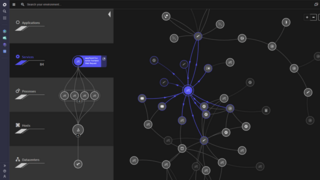User Action Naming Rules
Many applications allow users to accomplish the same goal through different UI controls. When monitoring such applications, it can be difficult to differentiate between actions that have the same result and goal, but are executed by using different parts of the application UI. Likewise, if the UI of an application is translated into multiple languages, the same application function or control can appear under varying names. With user action naming rules, Dynatrace can detect such subtle variations and intelligently group related user actions (i.e., user actions that achieve the same goal) into logical groups for monitoring.
Dynatrace automatically removes certain common sessionid tokens from user action names (for example, jsessionid for Java containers, the default sessionid for PHP, and CFID and CFTOKEN for ColdFusion). Nonetheless, there are numerous session ID variations that may be present in your environment. If Dynatrace doesn’t automatically recognize and remove session IDs from certain user action names you encounter, you’ll need to configure custom naming rules for those user actions.
Action Name Detection
Dynatrace tries to assign meaningful names for actions. To do this, it checks several action properties, such as inner HTML, caption, and hint, of the HTML element that triggers the action. This element can either be a button or an anchor. It also tries to get the caption if there’s a more complex HTML structure with multiple nested tags.
Set action name with data-dtname custom attribute
If the standard action name detection doesn’t serve your purpose, you can set the data-dtname custom attribute within the HTML tags and use it as a caption. For instance, the following action:
<label for=”txtFirstname”>Firstname</label> <input data-dtname=”Firstname Text Input” type=”text” value=”firstname” name=”firstname” title=”Firstname” id=”txtFirstname” />
can be assigned the following caption:
click on “Firstname Text input”
If you’re using different attribute names for different tools, you can choose to set an alternative to data-dtname that Dynatrace can use for user action naming purposes.
Resolving Captions for Actions
The RUM JavaScript uses several techniques to decide the name that best fits an action. It starts with the innermost HTML node that is clicked, such as a button, an image tag, or a link, and checks the following in the order of precedence:
- The attribute named data-dtname.
- The nodename, such as image, anchor, or input.
It stops when the html tag, the body tag, the head tag, or the document element is found.
- The innerText/textContent.
If none of these return a reasonable result, the RUM JavaScript starts applying a recursive algorithm that checks different things depending on the nodeName of the currently checked HTML node. If nothing is found, the parent node is checked.
Key User Actions
Most applications, both web and mobile, include user actions (for example, signups, checkouts, and product searches) that are particularly important to the success of your digital business. Such key user actions might take longer to execute than others or they might have the requirement to be of shorter-than-average duration.
For instance, consider that you’ve set your global Apdex threshold to 3 seconds. While this threshold might be acceptable for the majority of user actions, it might not be acceptable for a sign-up user action. Alternatively, there could be a search action that is quite complex and requires longer than the allotted 5 seconds.
With the key user action feature, you can customize the Apdex thresholds for each of these user actions. You can use this feature to monitor key actions with a dedicated dashboard tile and track historic trends.
Note: Dynatrace allows you to create a maximum of 500 key user actions per environment across all applications and a maximum of 100 key user actions per application. When you reach that limit, consider using calculated metrics for Real User Monitoring, which offer similar capabilities.
Mark a User Action as a Key User Action
-
On the Applications page, select the application, and scroll down to Top 3 user actions.
- Click View full details.
- Under Top 100 user actions, select a user action.
- In the upper-right corner of the User action details page, select Mark as key user action.
The selected user action will now be displayed under Key user actions on the User action analysis page.
- optional To access a key user action from the dashboard, select an action from the Key user actions list, and select Pin to dashboard.
- optional To customize its Apdex rating, on the User action details page of the key user action, select Browse (…) > Edit > Key Performance Metric.


